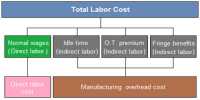Analytical procedures are a type of evidence used during an audit. These procedures can indicate possible problems with the financial records of a client, which can then be investigated more thoroughly.
Analytical procedures involve comparisons of different sets of financial and operational information, to see if historical relationships are continuing forward into the period under review. In most cases, these relationships should remain consistent over time. If not, it can imply that the financial records are incorrect, possibly due to errors or fraudulent reporting activity.
Examples of analytical procedures are as follows:
- Compare the days sales outstanding metric to the amount for prior years. This relationship between receivables and sales should remain about the same over time, unless there have been changes in the customer base, the credit policy of the organization, or its collection practices. This is a form of ratio analysis.
- Review the current ratio over several reporting periods. This comparison of current assets to current liabilities should be about the same over time, unless the entity has altered its policies related to accounts receivable, inventory, or accounts payable. This is a form of ratio analysis.
- Compare the ending balances in the compensation expense account for several years. This amount should rise somewhat with inflation. If not, there is a chance that fraudulent payments are being made to fake employees through the payroll system. This is a form of trend analysis.
- Examine a trend line of bad debt expenses. This amount should vary in relation to sales. If not, management may not be correctly recognizing bad debts in a timely manner. This is a form of trend analysis.
- Multiply the number of employees by average pay to estimate the total annual compensation, and then compare the result to the actual total compensation expense for the period. The client must explain any material difference from this amount, such as bonus payments or employee leave without pay. This is a form of reasonableness test.
When the results of these procedures are materially different from expectations, the auditor should discuss them with management. A certain amount of skepticism is needed when having this discussion, since management may not want to spend the time to delve into a detailed explanation, or may be hiding fraudulent behavior. Management responses should be documented, and could be valuable as a baseline when conducting the same analysis in the following year.
Auditors are required to engage in analytical procedures as part of an audit engagement.













